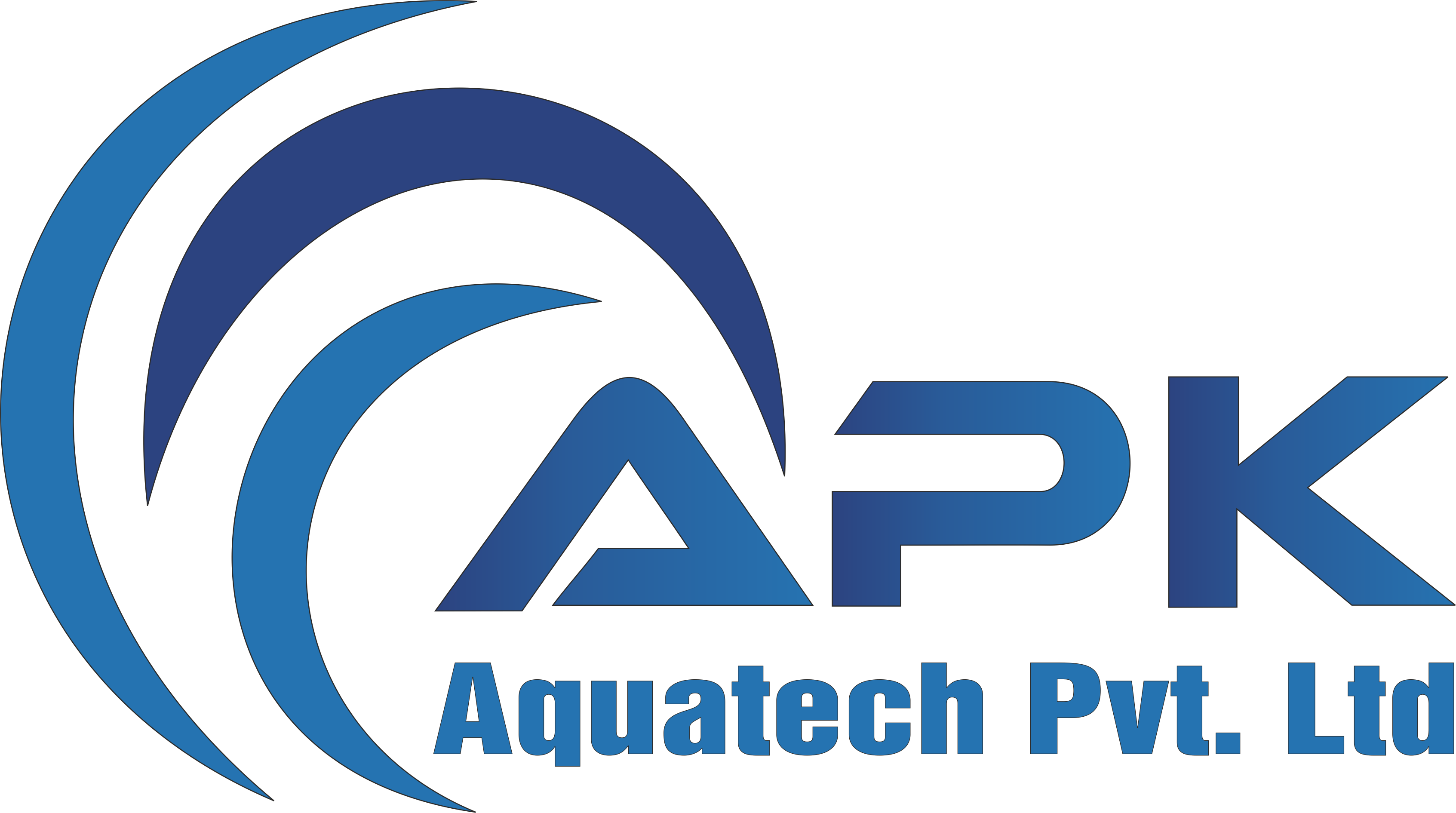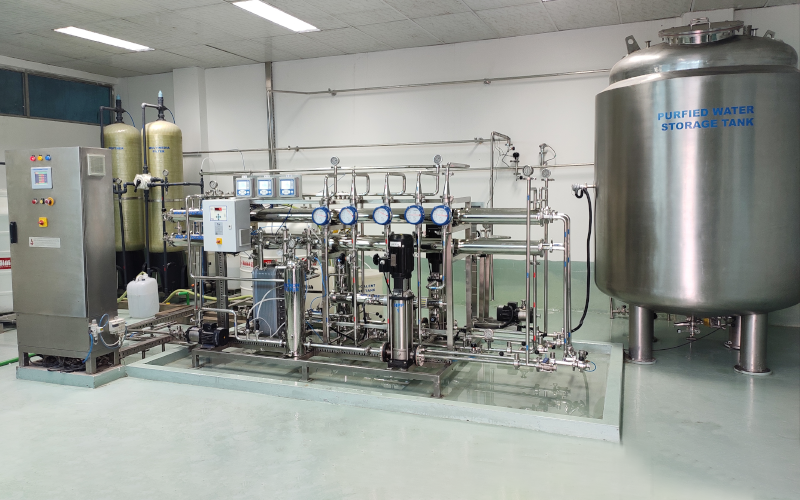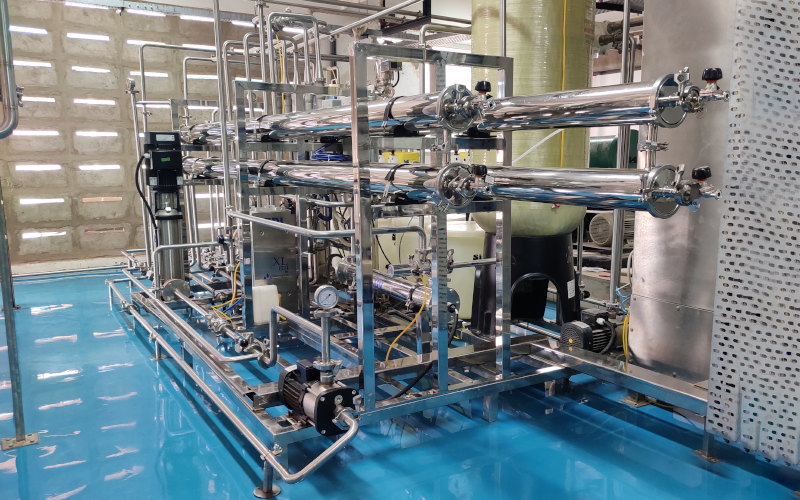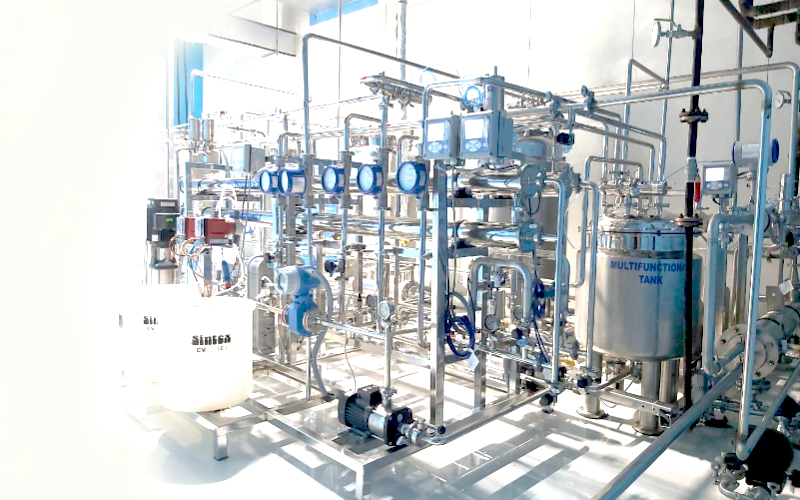Reverse Osmosis Systems [Single and Double Pass]
Reverse osmosis (RO) is a water purification process that uses a semi-permeable membrane to separate water molecules from other substances. RO is used in industrial operations for the manufacture of drinkable water because it has the ability to remove biological contaminants, primarily bacteria, as well as dissolved or suspended chemicals.
Reverse Osmosis Unit is the heart of the treatment scheme. It will reduce the Dissolved Salts from the raw water up to the remarkable level. A lot of bacteria are also removed in this process.
Process
- Single Pass Reverse Osmosis (RO)
In a single-pass system, the water passes over the RO membrane once and gets divided into the permeate water and the reject water stream.
- Double Pass Reverse Osmosis (RO)
In a two-stage RO system, the concentrate from the first stage becomes the feed water to the second stage. The permeate water that is collected from the first stage is combined with the permeate from the second stages. Additional stages increase the recovery of the system.
The feed water enters the RO system as a single stream and departs as either concentrate or permeate water in a one-stage RO system. The concentrate from the first stage provides the feed water for the second stage in a two-stage RO system. The permeate water collected in the first step is blended with the permeate water obtained in the second stage. Additional steps speed up the system’s recuperation.
Types & Uses
- Commercial/Industrial RO Membranes
Commercial/industrial RO membranes are designed with a higher level of use in mind. Think food processing, restaurants, hotels, and hospitals. They are able to support high flows with a high permeate production rate.
- Brackish Water RO Membranes BW Brackish Water Desalination is a procedure for treating brackish water, which has higher saline levels than freshwater but lower levels than seawater. This technology uses modern filtration and purification techniques to eliminate contaminants from brackish water, making it appropriate for drinking, irrigation, and industrial usage.They are used in any industrial application that involves removing excess salt, metals, and other TDS from water.
- Heat Sanitizable Reverse Osmosis
Heat-sanitizable reverse osmosis (HSRO) elements that deliver outstanding quality water with the added capability to withstand sanitization with hot water, eliminating the need for chemical sanitizers. HSRO membranes are designed for applications that require hygienic purified water. Purified water used in the pharmaceutical, medical, and biotechnology applications .Permeate polishing in food and dairy processes.
HSRO membranes combine heat sanitization, superior permeate quality, and high rejection rates, making them valuable in critical industries where purity and cleanliness are paramount.
- Seawater RO Membranes
Used for seawater desalination, these high productivity membranes are usually found on ships as well as land and sea-based desalination plants, creating drinkable water from seawater.
RO seawater desalination uses permeable membranes to remove dissolved solids while dividing the feed water into purified water and the rejected concentrated salts resulting in purified water with 99% less dissolved solids and salts. These seawater reverse osmosis systems are immensely powerful, with the capacity of purifying significantly high TDS water. Seawater RO systems are usable anywhere from yachts to municipalities. It’s important to choose the correct materials of construction to handle seawater as it is extremely corrosive.







